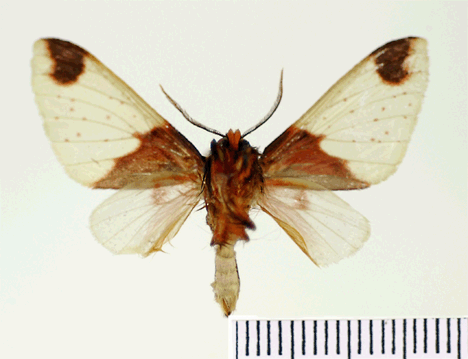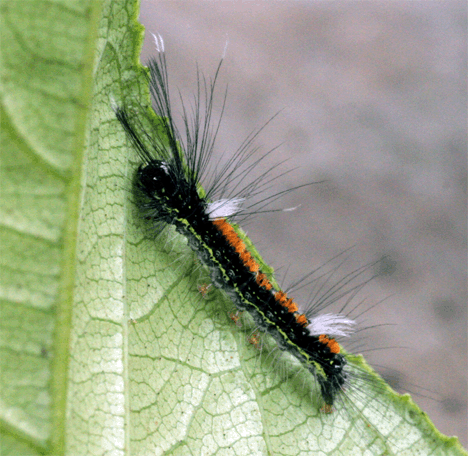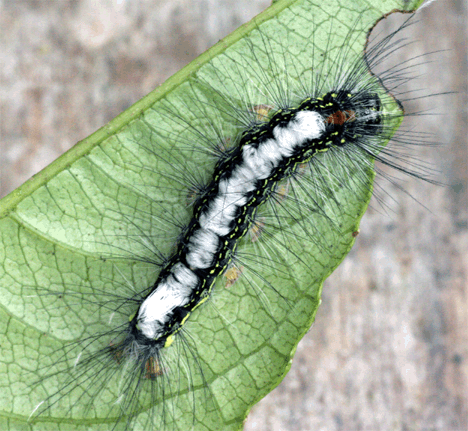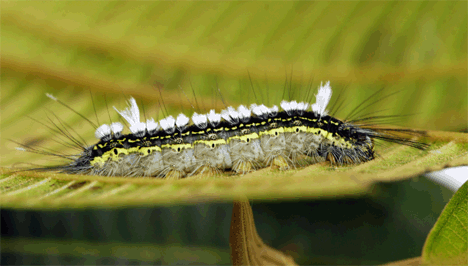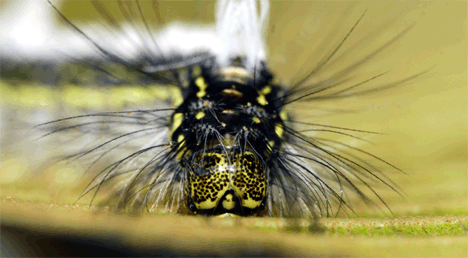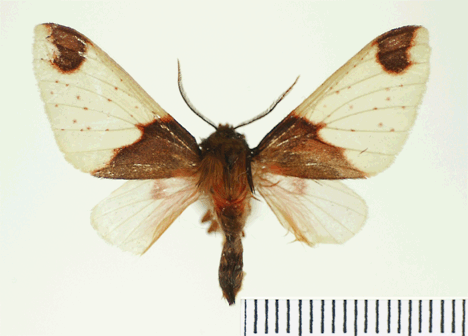LIFE HISTORY
DATA
|
Caterpillar
common name:
|
-
- "Montura blanca con
brochas grandes"
- " Rayas amarillas
espalda brochas blancas"
|
Caterpillar
behavior & description:
|
- The larvae of this species
are solitary feeders.
|
Rearing results
and development time:
|
-
-
|
|
Host
plants:
|
- Columnea ericae
(Gesneriaceae)
- Chusquea scandens
(Poaceae)
- Rubus sp.
(Rosaceae)
- Miconia sp.
(Melastomataceae)
- Tibouchina lepiota
(Melastomataceae)
|
Parasitoids:
|
|
Predators:
|
|
Collection
sites:
|
-
- Caterpillars were collected
inside primary forests, partially reforested pastures and
next to roads along an altitudinal transect from 400m
(Tena) to 3500m (Papallacta) in the vicinity of the
Yanayacu Biological Station and Center for Creative
Studies (YBS: S 00° 35.9' W 77° 53.4': 2100 m),
5km west of Cosanga, Napo province of eastern Ecuador.
|
Voucher locations
& numbers:
|
-
- @ American Museum of
Natural History : : 25836, 38466,
42341,
- @ University of Nevada
Reno (UNR): n.a.
|
Adult
identification status:
Dissections:
|
-
- Compared with male
Lectotype No. 30524 U.S.N.M., slide AW86.
-
- Specimen dissected by S.
Rab Green:
- Collected (YY) male located
@ , genitalia slide SRG #72
|
Original description
of adult:
|
-
- Dognin, P. 1906.
Hétérocères nouveaux de
l'Amérique du Sud. Annales de la
- Société
Entomologique de Belgique 50: 181.
|
Type
locality:
|
- Peru: Described from
an unspecified number of males from Limbani and
Agaualani, Carabaya, southeastern Peru.
|
Known distribution
range:
|
|
|
|
|
